What is Application Cache
HTML5Introduces application caching technology, which means that web applications can be cached and used without a network When used, offline applications can be easily created by creating a cache manifest file.
The three advantages brought by Application Cache are:
① Offline browsing
② Improve page loading speed
③ Reduce server pressure
And all major browsers support Application Cache, even if it does not support it, it will not have any impact on the program
Offline storage technology
HTML5 proposes two major offline storage technologies: localstorage and Application Cache, both have their own application scenarios; the traditional and offline storage technology is Cookie.
Through practice, our task localstorage should store some non-critical ajax data, which is the icing on the cake;
Application Cache is used to store static resources, which is still the icing on the cake;
And cookie can only save a small piece of text (4096 bytes); so it cannot store big data. This is one of the differences between cookie and the above caching technology. Because HTTP is stateless, the server needs to distinguish whether the request comes from the same server. A server needs an identification string, and this task is completed by cookies. This text will be passed between the server and the browser every time to verify the user's permissions.
So the application scenarios of Application Cache are different, so the usage is inconsistent.
Introduction to Application Cache
The use of Application Cache requires two aspects of work:
① The server needs to maintain a manifest list
② On the browser Only a simple setting is required
<html manifest="demo.appcache">
Let’s illustrate with an example:
CACHE MANIFEST CACHE: # 需要缓存的列表 style1.css 1.jpg 01.js http://localhost/applicationcache/02.js http://localhost/applicationcache/zepto.js NETWORK: # 不需要缓存的 4.jpg FALLBACK: # 访问缓存失败后,备用访问的资源,第一个是访问源,第二个是替换文件*.html /offline.html 2.jpg/3.jpg
First of all, I reported an error here:
Application Cache Error event: Manifest fetch failed (404)
The reason for this error is: manifest file The correct MIME-type needs to be configured, which is "text/cache-manifest". It must be configured on the web server. Different servers are different

\APPLICATIONCACHE
01.js
02.js
1.jpg
2.jpg
3.jpg
4.jpg
demo.appcache
index.html
style1.css
style2.css
web.config
zepto.jsThis way it can be applied offline. Even if the network is disconnected at this time, those files can still be accessed.

There is one thing worth noting here. For example, if /index.html is not included here, it will cache "applicationcache/". In fact, this is index.html
manifest 文件可分为三个部分: CACHE MANIFEST - 在此标题下列出的文件将在首次下载后进行缓存 NETWORK - 在此标题下列出的文件需要与服务器的连接,且不会被缓存 FALLBACK - 在此标题下列出的文件规定当页面无法访问时的回退页面(比如 404 页面)

As shown in the figure, HTML5 defines several event points, but we generally do not actively use js to operate anything. In most cases, we can completely rely on the browser's processing.
Size limit
The size limit of Application Cache is unified at 5M. Let me do a test here:

As shown, two The css file still exceeds 5M. At this time
Document was loaded from Application Cache with manifest http://localhost/applicationcache/demo.appcache index.html:1 Application Cache Checking event index.html:6 GET http://localhost/applicationcache/style2.css net::ERR_FAILED index.html:1 Application Cache NoUpdate event index.html:11 GET http://localhost/applicationcache/2.jpg net::ERR_FAILED index.html:12 GET http://localhost/applicationcache/3.jpg net::ERR_FAILED
As shown, style2 can no longer be cached. What problems will this cause?
For example, channel A maintains its own Application Cache, and channel B also maintains its own. At this time, if the usage of channel A reaches a peak, all caches of channel B will become invalid, so:
建议Application Cache,存储公共资源,不要存储业务资源
Some problems
In terms of the update mechanism, when the manifest is updated for the first time, because the page loading has already started or even completed, the cache update has not yet been completed, and the browser will still use the expired Resources; when the Application Cache is updated, the browser will not use the new resources this time, but will use them the second time. At this time, the window.reload event is executed in the update event.
window.applicationCache.addEventListener("updateready", function(){
window.location.reload()
});
From the above example, we can know that the cache is not just the display definition file. For example, applicationcache/ in the above example will save index.html as mapped data by default, and include the demo.appcache file, many Sometimes you will encounter a file that is not updated online. At this time, you can just make some modifications in manifestConfiguration File and you can update it.
For example, we will make a change to this code:
=>
If demo.appcache is not updated at this time, the cache will not be updated because index.html is cached. Detection is still the original manifest list
Each page manages its own manifest list in a unified manner, which means that page a is configured with common.js, and page b is also configured with common.js, which means that after page a is updated, page b's If the manifest is not changed, page b will still read the old version of the file. This makes sense but is also wasteful and requires public page processing.
Summary
In terms of usability and ease of use, Application Cache is worth using, but it is best to cache static resources. It will take more to truly implement offline applications. Kung fu!
The above is the detailed content of Parsing the HTML5 application cache Application Cache. For more information, please follow other related articles on the PHP Chinese website!
 html5的div一行可以放两个吗Apr 25, 2022 pm 05:32 PM
html5的div一行可以放两个吗Apr 25, 2022 pm 05:32 PMhtml5的div元素默认一行不可以放两个。div是一个块级元素,一个元素会独占一行,两个div默认无法在同一行显示;但可以通过给div元素添加“display:inline;”样式,将其转为行内元素,就可以实现多个div在同一行显示了。
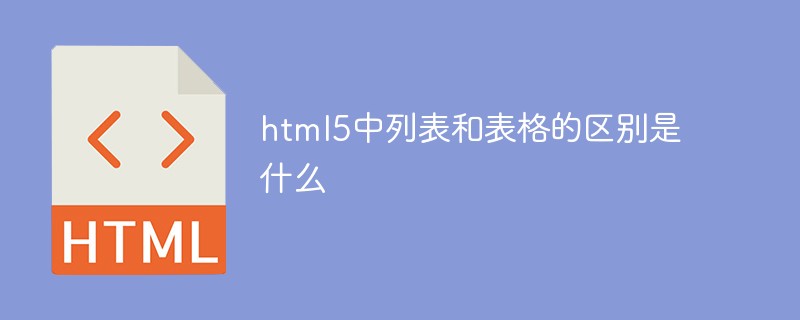 html5中列表和表格的区别是什么Apr 28, 2022 pm 01:58 PM
html5中列表和表格的区别是什么Apr 28, 2022 pm 01:58 PMhtml5中列表和表格的区别:1、表格主要是用于显示数据的,而列表主要是用于给数据进行布局;2、表格是使用table标签配合tr、td、th等标签进行定义的,列表是利用li标签配合ol、ul等标签进行定义的。
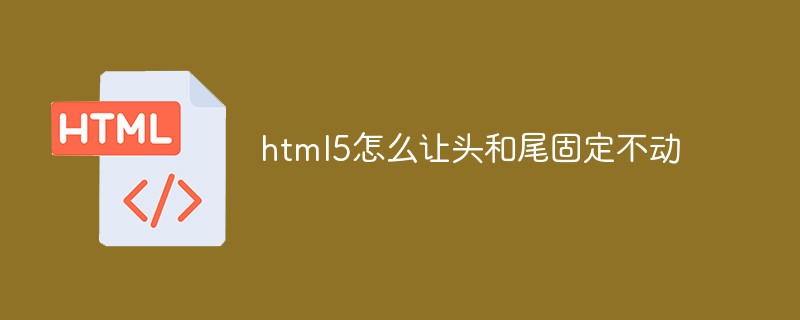 html5怎么让头和尾固定不动Apr 25, 2022 pm 02:30 PM
html5怎么让头和尾固定不动Apr 25, 2022 pm 02:30 PM固定方法:1、使用header标签定义文档头部内容,并添加“position:fixed;top:0;”样式让其固定不动;2、使用footer标签定义尾部内容,并添加“position: fixed;bottom: 0;”样式让其固定不动。
 HTML5中画布标签是什么May 18, 2022 pm 04:55 PM
HTML5中画布标签是什么May 18, 2022 pm 04:55 PMHTML5中画布标签是“<canvas>”。canvas标签用于图形的绘制,它只是一个矩形的图形容器,绘制图形必须通过脚本(通常是JavaScript)来完成;开发者可利用多种js方法来在canvas中绘制路径、盒、圆、字符以及添加图像等。
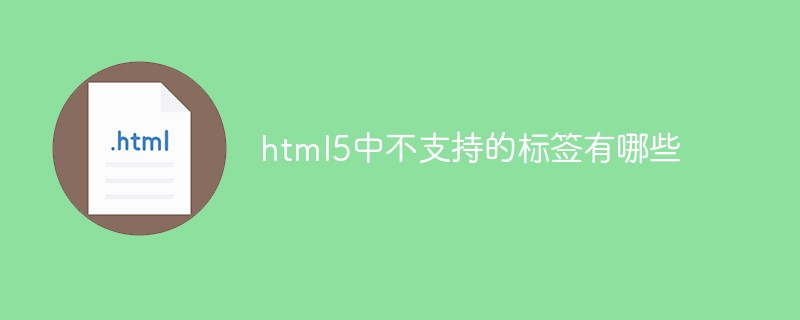 html5中不支持的标签有哪些Mar 17, 2022 pm 05:43 PM
html5中不支持的标签有哪些Mar 17, 2022 pm 05:43 PMhtml5中不支持的标签有:1、acronym,用于定义首字母缩写,可用abbr替代;2、basefont,可利用css样式替代;3、applet,可用object替代;4、dir,定义目录列表,可用ul替代;5、big,定义大号文本等等。
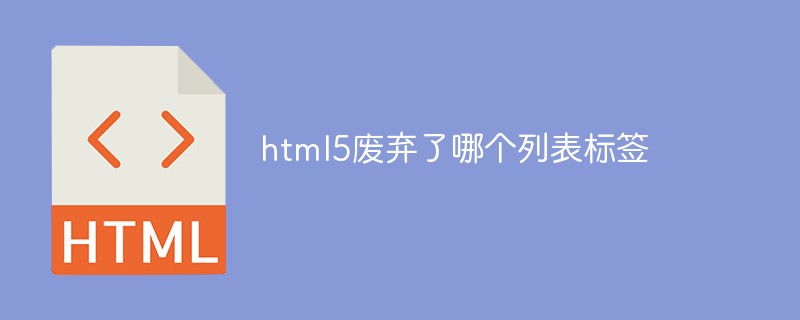 html5废弃了哪个列表标签Jun 01, 2022 pm 06:32 PM
html5废弃了哪个列表标签Jun 01, 2022 pm 06:32 PMhtml5废弃了dir列表标签。dir标签被用来定义目录列表,一般和li标签配合使用,在dir标签对中通过li标签来设置列表项,语法“<dir><li>列表项值</li>...</dir>”。HTML5已经不支持dir,可使用ul标签取代。
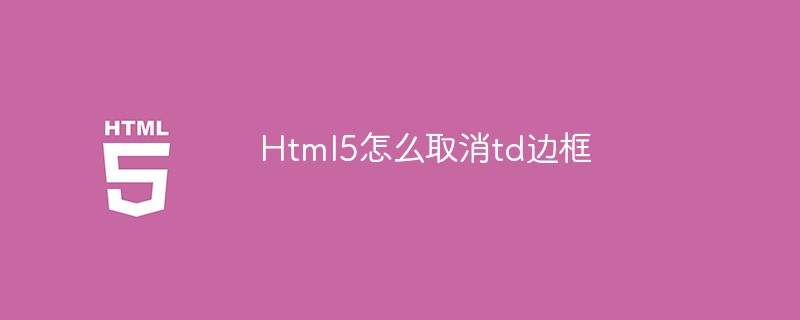 Html5怎么取消td边框May 18, 2022 pm 06:57 PM
Html5怎么取消td边框May 18, 2022 pm 06:57 PM3种取消方法:1、给td元素添加“border:none”无边框样式即可,语法“td{border:none}”。2、给td元素添加“border:0”样式,语法“td{border:0;}”,将td边框的宽度设置为0即可。3、给td元素添加“border:transparent”样式,语法“td{border:transparent;}”,将td边框的颜色设置为透明即可。
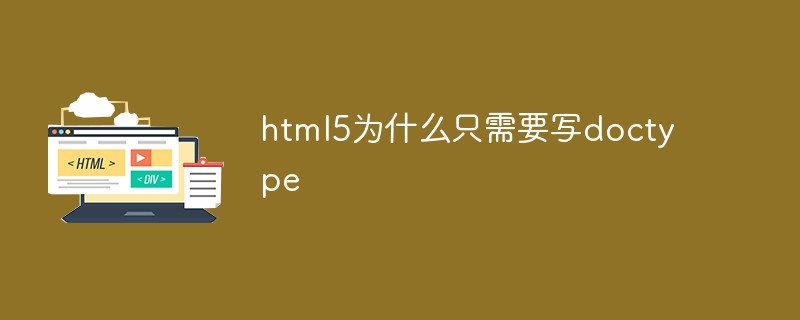 html5为什么只需要写doctypeJun 07, 2022 pm 05:15 PM
html5为什么只需要写doctypeJun 07, 2022 pm 05:15 PM因为html5不基于SGML(标准通用置标语言),不需要对DTD进行引用,但是需要doctype来规范浏览器的行为,也即按照正常的方式来运行,因此html5只需要写doctype即可。“!DOCTYPE”是一种标准通用标记语言的文档类型声明,用于告诉浏览器编写页面所用的标记的版本。


Hot AI Tools

Undresser.AI Undress
AI-powered app for creating realistic nude photos

AI Clothes Remover
Online AI tool for removing clothes from photos.

Undress AI Tool
Undress images for free

Clothoff.io
AI clothes remover

AI Hentai Generator
Generate AI Hentai for free.

Hot Article

Hot Tools

DVWA
Damn Vulnerable Web App (DVWA) is a PHP/MySQL web application that is very vulnerable. Its main goals are to be an aid for security professionals to test their skills and tools in a legal environment, to help web developers better understand the process of securing web applications, and to help teachers/students teach/learn in a classroom environment Web application security. The goal of DVWA is to practice some of the most common web vulnerabilities through a simple and straightforward interface, with varying degrees of difficulty. Please note that this software

Atom editor mac version download
The most popular open source editor

SecLists
SecLists is the ultimate security tester's companion. It is a collection of various types of lists that are frequently used during security assessments, all in one place. SecLists helps make security testing more efficient and productive by conveniently providing all the lists a security tester might need. List types include usernames, passwords, URLs, fuzzing payloads, sensitive data patterns, web shells, and more. The tester can simply pull this repository onto a new test machine and he will have access to every type of list he needs.

Dreamweaver Mac version
Visual web development tools

Zend Studio 13.0.1
Powerful PHP integrated development environment







